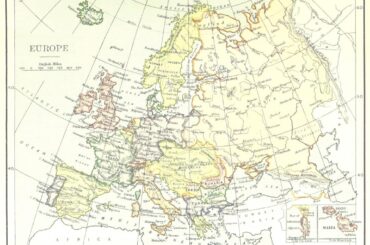Ever feel lost when talk turns to international trade? You’re not alone, and it’s totally normal to feel unsure, because tariffs, explained simply, are taxes on imports. They’re usually a percentage of what a buyer pays a foreign seller.
It is something many people don’t fully grasp, but this post is here to help. By the end of this, “tariffs explained” will hopefully be something you’re more comfortable with.
Table Of Contents:
- What Are Tariffs, Really?
- The Misinformation Around Tariffs
- Tariffs Explained: Protecting Domestic Industries
- The Economic View on Tariffs Explained
- How Tariffs Influence Trade Policy
- A Look at Recent Tariff Actions
- Industrial Policy and Tariffs Explained
- Who Pays for Tariffs Explained?
- Conclusion
What Are Tariffs, Really?
In the United States, Customs and Border Protection agents collect tariffs. These agents are at 328 ports of entry, according to PBS.
Think of them as a fee for bringing goods into a country. This fee is intended to help protect domestic industries, making imported goods more expensive.
The Misinformation Around Tariffs
One common myth is about who pays the tariff. While some claim foreign countries pay, it’s actually American companies, the importers, who pay.
These costs often get passed to consumers. That’s why many economists say consumers ultimately pay the tariff, not foreign businesses.
How Tariffs Impact International Relations
Tariffs can strain relations by making it harder for other countries to sell their goods. Foreign companies might lower prices to offset the tariffs impact, affecting their profits.
Economist Yang Zhou found that tariffs on Chinese goods hurt China’s economy more than the U.S. economy, as shown in research shared by PBS. This illustrates how significantly tariffs affect global trade balance and import duties.
Tariffs Explained: Protecting Domestic Industries
The main goal of tariffs is often to protect domestic manufacturers. By increasing the cost of imported goods, tariffs make local products more competitive.
They can also be used to address unfair trade practices. Examples include governments subsidizing exporters or companies “dumping” products at artificially low prices.
Tariffs as a Historical Revenue Source
Before 1913, tariffs were a major source of government revenue. From 1790 to 1860, tariffs were about 90% of federal income, according to data from Douglas Irwin.
Their importance declined with increased global trade post-World War II. But recently, tariffs have become a hot topic again, especially during the previous Presidential administration.
The Economic View on Tariffs Explained
Economists often see tariffs as having both pros and cons. Tariffs might help local businesses, but they can also raise prices and damage trade relationships.
They’re also likely to lead to retaliatory measures from other countries. For instance, the European Union imposed tariffs on U.S. products in response to steel and aluminum tariffs, as noted by PBS.
The Impact of Retaliatory Tariffs Explained
Retaliation is a major concern in trade disputes. China imposed tariffs on American goods after the U.S. placed tariffs on Chinese imports.
A study by economists from MIT and other institutions showed these tariffs didn’t restore manufacturing jobs. The number of jobs at U.S. steel plants stayed around 140,000.
How Tariffs Influence Trade Policy
Tariffs are used for more than managing trade flows. The Congressional Research Service notes tariffs’ role in policy.
Sometimes, tariffs aim to pressure other countries. This has, at times, led to action to reach wanted results.
Tariffs and Trade Agreements
The U.S. has trade agreements affecting tariff rates. Before recent tariffs, many goods from Canada and Mexico were tariff-free due to existing trade deals. The details of duties and rates will be different based on what goods they apply to. There is a duty of 2.5 percent on passenger cars coming into the country, but there is a higher, 6 percent rate for imported golf shoes according to PBS.
These agreements show how tariffs fit into trade talks. The trade talks and trade wars aim to improve relations.
A Look at Recent Tariff Actions
The U.S. has used tariffs to try to fix trade imbalances and protect national interests. In 2018, the value of China’s currency decreased, while the dollar’s value increased, partly due to U.S. tariff actions.
These actions involved tariffs on many goods. While this affected many industries and trade relationships, the White House cited an emergency situation for the scale of the initiative.
Using Tariffs Beyond Trade
Beyond economics, tariffs have addressed non-trade issues. Not everyone agrees with this approach, but it happens.
The threat of tariffs can be leverage. It is a tactic to affect a nation’s policies.
Industrial Policy and Tariffs Explained
Are tariffs and industrial policy the same thing? No, tariffs should be just one part of a broader industrial strategy.
New research from EPI says effective policies have three key features. First, they help create positive economic effects across multiple sectors.
Second, they work best when information about the tariffs is publicly available. Transparency is an important element in sound trade policy.
Who Pays for Tariffs Explained?
It might not surprise you that tariffs, upon close examination, often burden consumers. Some affected by past government actions even declared bankruptcy, as EPI reported.
Tariffs affect us directly, impacting our wallets and daily expenses. We often experience tariffs through price increases on both imported and domestically produced goods.
Breaking Down Tariffs Explained
Let’s simplify how tariffs add to costs. There are different ways this can play out, impacting the final price tag.
Here’s how tariffs can impact pricing:
| Step | Action | Impact |
|---|---|---|
| 1 | Initial Cost | CompanyX in CountryA sells phones for $100 each. |
| 2 | Tariff Imposed | CountryB imposes a 10% tariff on phones from CountryA. |
| 3 | Cost Increase | Importers in CountryB now pay $110 per phone ($100 + 10% tariff). |
| 4 | Price Adjustment | Businesses in CountryB raise consumer prices to maintain profit margins, possibly to $175. |
| 5 | Consumer Pays More | Consumers pay the tariff price that was put into place. |
Conclusion
Tariffs, explained, can vary greatly over time. These policies, as we’ve seen, have far-reaching effects.
They are part of global politics, but impact local economies. You might even see your neighbor, the farmer, affected by these trade policies.





